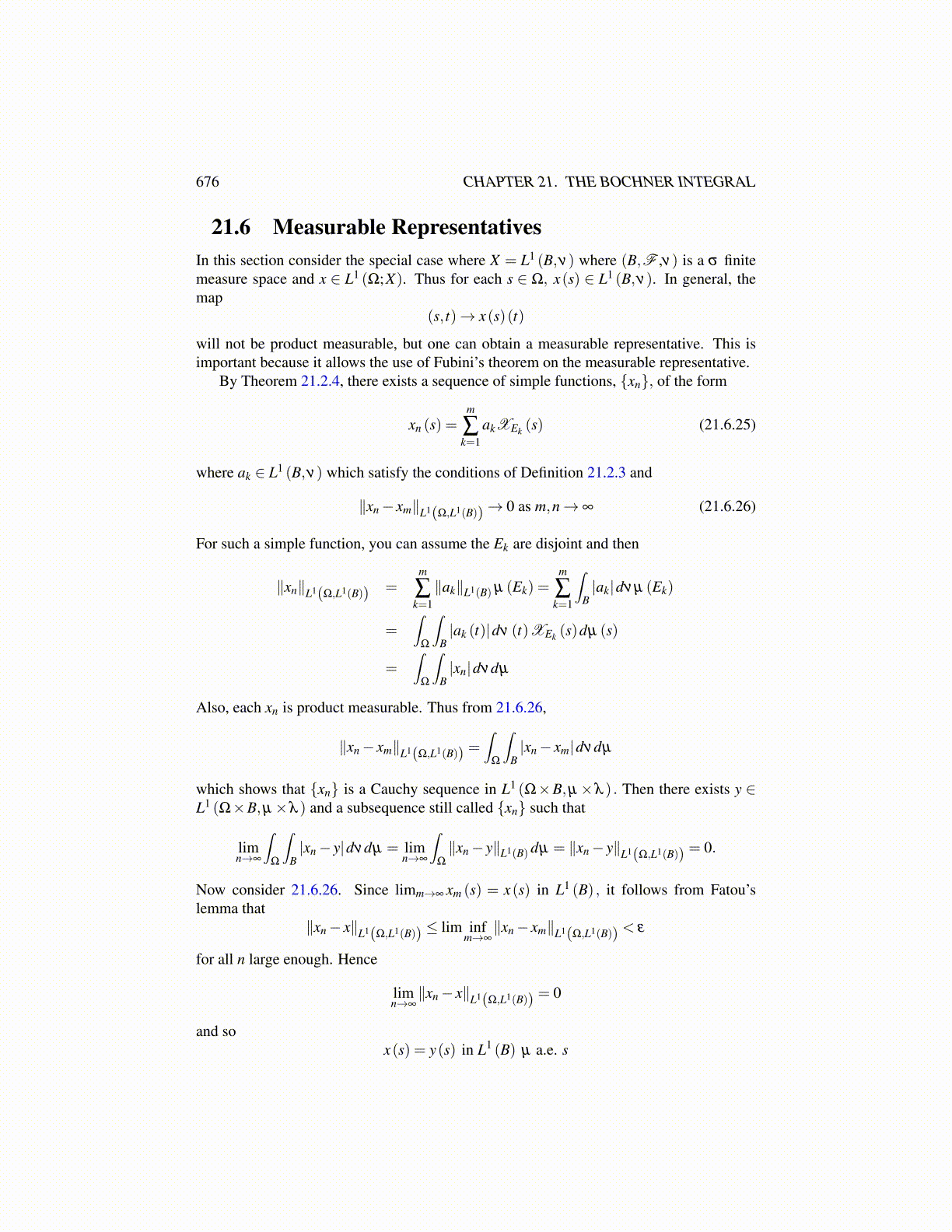
676 CHAPTER 21. THE BOCHNER INTEGRAL
21.6 Measurable RepresentativesIn this section consider the special case where X = L1 (B,ν) where (B,F ,ν) is a σ finitemeasure space and x ∈ L1 (Ω;X). Thus for each s ∈ Ω, x(s) ∈ L1 (B,ν). In general, themap
(s, t)→ x(s)(t)
will not be product measurable, but one can obtain a measurable representative. This isimportant because it allows the use of Fubini’s theorem on the measurable representative.
By Theorem 21.2.4, there exists a sequence of simple functions, {xn}, of the form
xn (s) =m
∑k=1
akXEk (s) (21.6.25)
where ak ∈ L1 (B,ν) which satisfy the conditions of Definition 21.2.3 and
∥xn− xm∥L1(Ω,L1(B))→ 0 as m,n→ ∞ (21.6.26)
For such a simple function, you can assume the Ek are disjoint and then
∥xn∥L1(Ω,L1(B)) =m
∑k=1∥ak∥L1(B) µ (Ek) =
m
∑k=1
∫B|ak|dνµ (Ek)
=∫
Ω
∫B|ak (t)|dν (t)XEk (s)dµ (s)
=∫
Ω
∫B|xn|dνdµ
Also, each xn is product measurable. Thus from 21.6.26,
∥xn− xm∥L1(Ω,L1(B)) =∫
Ω
∫B|xn− xm|dνdµ
which shows that {xn} is a Cauchy sequence in L1 (Ω×B,µ×λ ) . Then there exists y ∈L1 (Ω×B,µ×λ ) and a subsequence still called {xn} such that
limn→∞
∫Ω
∫B|xn− y|dνdµ = lim
n→∞
∫Ω
∥xn− y∥L1(B) dµ = ∥xn− y∥L1(Ω,L1(B)) = 0.
Now consider 21.6.26. Since limm→∞ xm (s) = x(s) in L1 (B) , it follows from Fatou’slemma that
∥xn− x∥L1(Ω,L1(B)) ≤ lim infm→∞∥xn− xm∥L1(Ω,L1(B)) < ε
for all n large enough. Hence
limn→∞∥xn− x∥L1(Ω,L1(B)) = 0
and sox(s) = y(s) in L1 (B) µ a.e. s